Assess the position of the trachea
This is done by sliding the fingers up the sternum into the suprasternal notch. One then assesses whether the trachea lies centrally within the notch, or whether it lies closer to the left or the right sternocleidomastoid muscle.
| AFRIKAANS | TRANSCRIPT | XHOSA |
|---|---|---|
| I?m now going to examine your windpipe. / Ek gaan nou u lugpyp ondersoek. / Ngoku ndizakuxilonga uqhoqhoqho. | ||
| Okay? / Reg so? / Kulungile? |
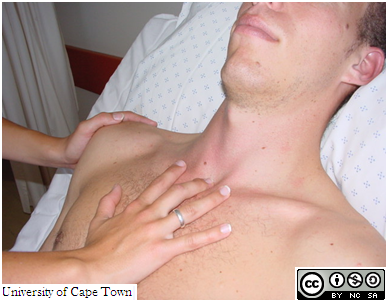
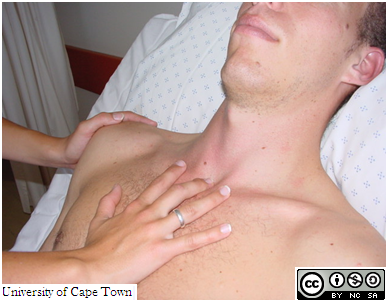
Now watch how this is done.
| AFRIKAANS | TRANSCRIPT | XHOSA |
|---|---|---|
| I will be gentle. / Ek sal saggies werk. / Ndiza kwenza gobunono. | ||
| Let me know if it?s uncomfortable. / S?vir my as dit ongemaklik voel. / Ndixelele xa ungakhululekanga. |
This is done by sliding the fingers up the sternum into the suprasternal notch. One then assesses whether the trachea lies centrally within the notch, or whether it lies closer to the left or the right sternocleidomastoid muscle.
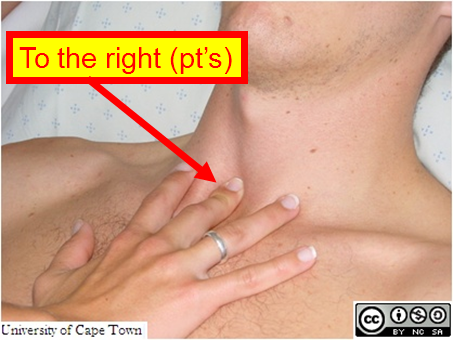
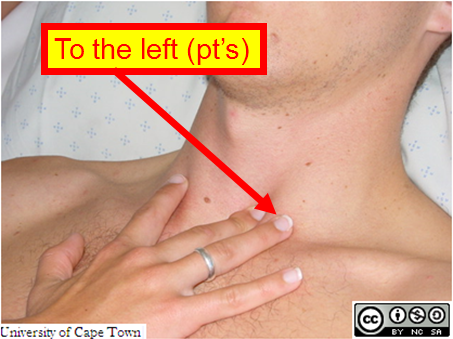
Assess the position of the trachea from behind the patient. Place the index fingers or middle fingers into the sternal notch. Move fingers up between the trachea and the sternocleidomastoid muscles on either side. Assess the amount of space on either side of the trachea.
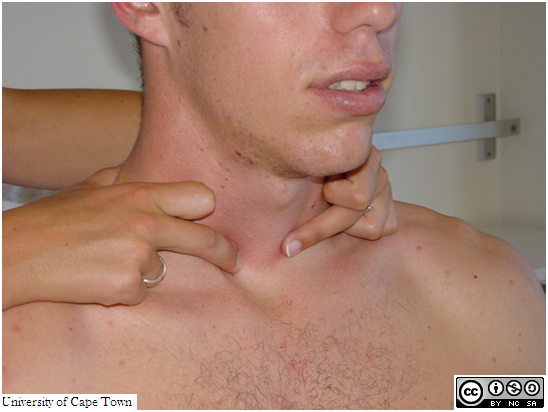
Now watch how this is done.
